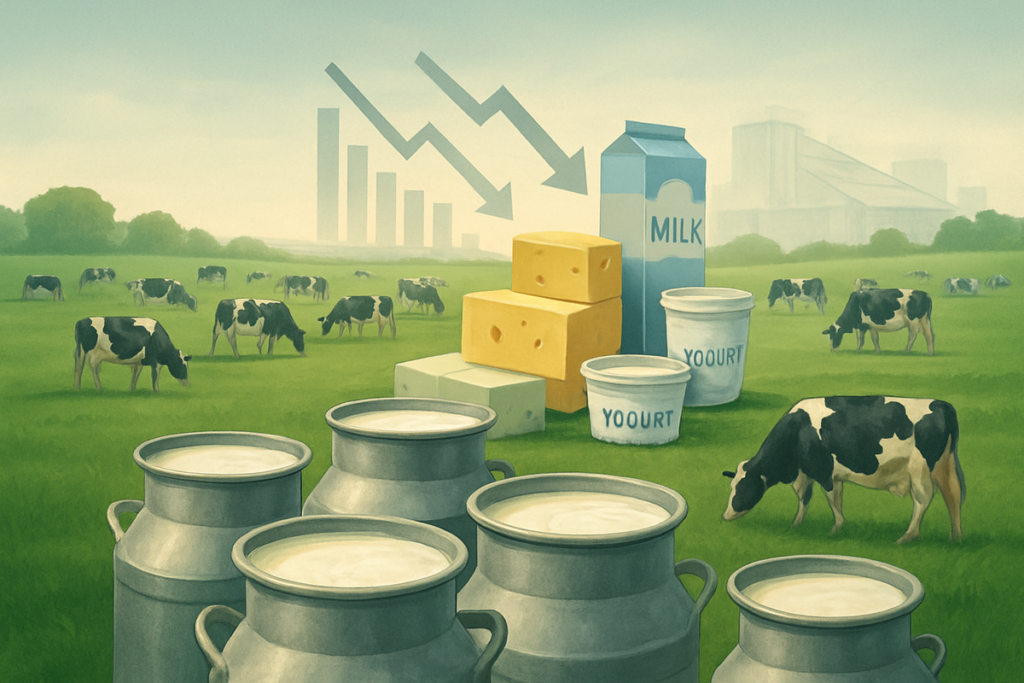Recent reports suggest that a global milk supply surge is placing significant downward pressure on dairy commodity prices, posing a challenge to both producers and processors. Milk production from key exporting regions, including the EU, US and New Zealand, is now rising faster than demand, leading to an inventory accumulation across the international dairy chain.
The imbalance is most evident in key dairy commodities: butter, milk powders and cheese. As supply overshoots demand, global prices are declining, compressing margins for both farmers and manufacturers. This trend is not limited to one region. AHDB data shows UK milk deliveries during Q3 of 2025 surged by 5% year-on-year, signalling that domestic oversupply is contributing heavily to the broader pressure.
Analysts argue that this supply-demand mismatch is structural, not cyclical. Persistent high production levels, especially in exporting nations, mean that even if growth slows, the existing excess may take time to absorb, keeping commodity prices depressed. Moreover, weak demand from key global markets and increasing dairy inventories are exacerbating the downturn, delaying any meaningful recovery until at least 2026, according to some market watchers.
For dairy farmers, this glut translates into potential pricing risk. As commodity prices fall, farmgate values may come under pressure, especially for those relying on bulk milk contracts. Processors, faced with surplus volumes, may resort to discounted offloading or increased storage, which could further squeeze their margins. The current environment thus demands more active risk management, product diversification and demand stimulation strategies.
Looking ahead, stability may hinge on a combination of supply moderation in major producing regions and renewed demand from both export and domestic markets. Until then, the oversupply remains a major overhang for the global dairy sector.
